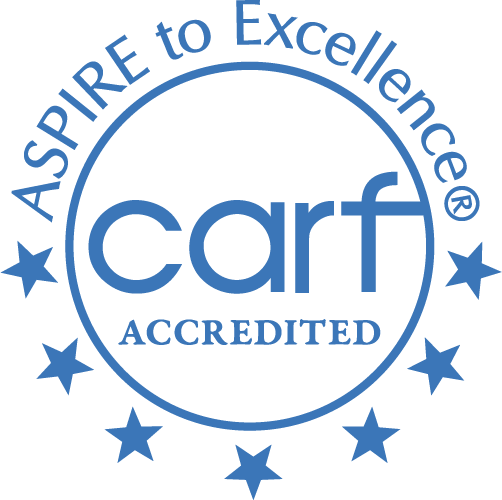
61607 29 Palms Highway
Joshua Tree, CA. 92252
760-366-8641
Joshua Tree, CA has nearby treatment options including: 1 medicaid treatment center, 3 inpatient treatment centers, 3 drug rehabs that take private insurance like BCBS, 3 detox centers, 1 outpatient rehab.

For help finding an addiction treatment center, Call us!
All calls are 100% confidential and free
1-877-882-9275


Living Longer Recovery is 18.3 miles from Joshua Tree, CA
Like other alcohol and drug rehab programs, Living Longer Recovery is committed to long term recovery for drug and alcohol abusers living in Joshua Tree, California and within the surrounding region. As such, this drug and alcohol rehab program has been offering care like relapse prevention, cognitive/behavior therapy, activity therapy, vocational rehabilitation services, dialectical behavior therapy, behavior modification and more.
Further, Living Longer Recovery knows that it is important that its patients receive individual focus and services to make sure that they get effective results. This is why it specializes in several programs such as persons with post-traumatic stress disorder, residential beds for client's children, suicide prevention services, housing services, persons who have experienced sexual abuse, social skills development and many other modes of treatment that you can find listed in the following section. Each of the services that Living Longer Recovery provides are also available in a variety of settings - inpatient detox centers, long term rehabs, inpatient drug abuse treatment, short term drug and alcohol rehab facilities, outpatient substance abuse treatment services and more.
This rehab also has aftercare plans and programs that can help you find lasting stability in the long term. Finally, Living Longer Recovery accepts private medical insurance, private pay, payment assistance, medicaid, medicare, other state funds, access to recovery (atr) voucher and others.



Gravity Treatment Centers Inc is 18.3 miles from Joshua Tree, CA
Like other alcohol and drug rehab centers, Gravity Treatment Centers Inc is dedicated to long term recovery for alcohol and drug abusers living in Joshua Tree, California and within the surrounding region. As such, this alcohol and drug rehabilitation program has been offering care like relapse prevention, cognitive/behavior therapy, activity therapy, vocational rehabilitation services, dialectical behavior therapy, behavior modification and more.
In Addition, Gravity Treatment Centers Inc thinks that it is essential that its clients receive individual focus and services to ensure that they are successful. They specialize in various programs such as persons with post-traumatic stress disorder, residential beds for client's children, suicide prevention services, housing services, persons who have experienced sexual abuse, social skills development and many other modes of treatment that you can find listed below. These services that Gravity Treatment Centers Inc provides are also available in different settings - detox centers, long term rehab programs, inpatient treatment facilities, short term drug and alcohol rehab programs, outpatient day treatment and more.
Not surprisingly, this rehab also has aftercare plans that can help you achieve permanent and lasting stability in the long term. Finally, Gravity Treatment Centers Inc accepts private medical insurance, cash or self-payment, payment assistance, medicaid, medicare, other state funds, access to recovery (atr) voucher and others.



Ranch Recovery Centers Inc is 18.4 miles from Joshua Tree, California
Methadone, Suboxone (a combination of buprenorphine and naloxone), and Subutex (buprenorphine) are medications used in Medication-Assisted Treatment (MAT) for opioid use disorders. Their primary purpose in the recovery process is to help manage withdrawal symptoms and reduce cravings, facilitating a safer, more comfortable transition to abstinence or long-term management of the disorder. Here's a more detailed look at how each of these medications function:
Methadone: Methadone is a long-acting opioid agonist, which means it activates the same receptors in the brain that other opioids like heroin, morphine, or prescription painkillers do. However, it does so more slowly and for a longer duration, without causing the intense euphoria associated with misuse of those drugs. This helps to mitigate withdrawal symptoms and cravings, enabling individuals to function more normally in daily life.
Suboxone: Suboxone contains two active ingredients: buprenorphine and naloxone. Buprenorphine is a partial opioid agonist, meaning it activates the opioid receptors in the brain, but to a lesser extent than full agonists like heroin or methadone. This can help manage cravings and withdrawal symptoms without producing the high associated with opioid misuse. Naloxone is an opioid antagonist, meaning it blocks the effects of opioids. It's included in Suboxone to discourage misuse of the medication; if someone tries to inject Suboxone, the naloxone will trigger withdrawal symptoms.
Subutex: Subutex is the brand name for buprenorphine alone. Like in Suboxone, buprenorphine in Subutex serves to lessen withdrawal symptoms and reduce cravings. It is typically used in the initial stages of treatment, while Suboxone is more commonly used for maintenance.
These medications are typically used as part of a comprehensive treatment plan that also includes counseling and behavioral therapies. It's important to note that while these medications can be highly effective in supporting recovery, they should be used under the guidance of a healthcare provider due to the risk of misuse and potential side effects. Each individual's treatment plan should be tailored to their unique needs and circumstances to ensure the best possible outcomes.
Fentanyl is a synthetic opioid that is 50 to 100 times more potent than morphine. It is used medically to treat severe pain, but its potent nature also makes it dangerous when misused or taken in excessive amounts. When a person overdoses on fentanyl, several life-threatening symptoms and complications can occur:
If you suspect someone is experiencing a fentanyl overdose, it is crucial to call emergency medical services immediately. Administering naloxone, an opioid antagonist, can temporarily reverse the effects of the overdose, but multiple doses may be needed due to fentanyl's potency. It is essential to note that naloxone is not a substitute for professional medical care, and the person must still receive prompt medical attention to address any underlying complications and ensure proper treatment.
Medical detox, also known as medically supervised detoxification, is the process of safely managing the physical symptoms of withdrawal from substances like alcohol, opioids, or other drugs under the supervision of healthcare professionals. This process is typically the first step in a comprehensive treatment plan for substance use disorders.
The goal of medical detox is to minimize the physical harm caused by withdrawal and to alleviate discomfort. Here's what it typically involves:
Evaluation: This first step includes a thorough assessment of the individual's physical and mental health, as well as the extent and nature of their substance use. This information is used to design an appropriate and personalized detox and treatment plan.
Stabilization: During this phase, medical professionals administer treatment to manage withdrawal symptoms and ensure the patient's safety. This may involve the use of medications to ease symptoms and prevent complications. Medical staff monitor the patient's vital signs like heart rate, blood pressure, and temperature, and may provide nutritional support and hydration as needed.
Preparation for Further Treatment: Once the acute phase of detox is complete, the focus shifts to preparing the individual for further treatment, such as inpatient or outpatient rehab. This may involve counseling or therapy to help the individual understand the importance of continuing treatment to maintain long-term recovery.
National Non Profit Helpline - 1-877-882-9275
Our National Non Profit Helpline is a 24/7, 365-day-a-year treatment referral and information service for individuals and families faced with mental and/or substance use disorders.
All calls are strictly confidential
Our service provides referrals to licensed treatment facilities, support groups, and community-based organizations. You don't have to struggle alone with addiction. Help is just a phone call away. Call 1-877-882-9275 now to get the help you need and deserve.
© Copyright 1998 - 2022 All Rights Reserved. Content is protected under copyright laws, do not use content without written permission.